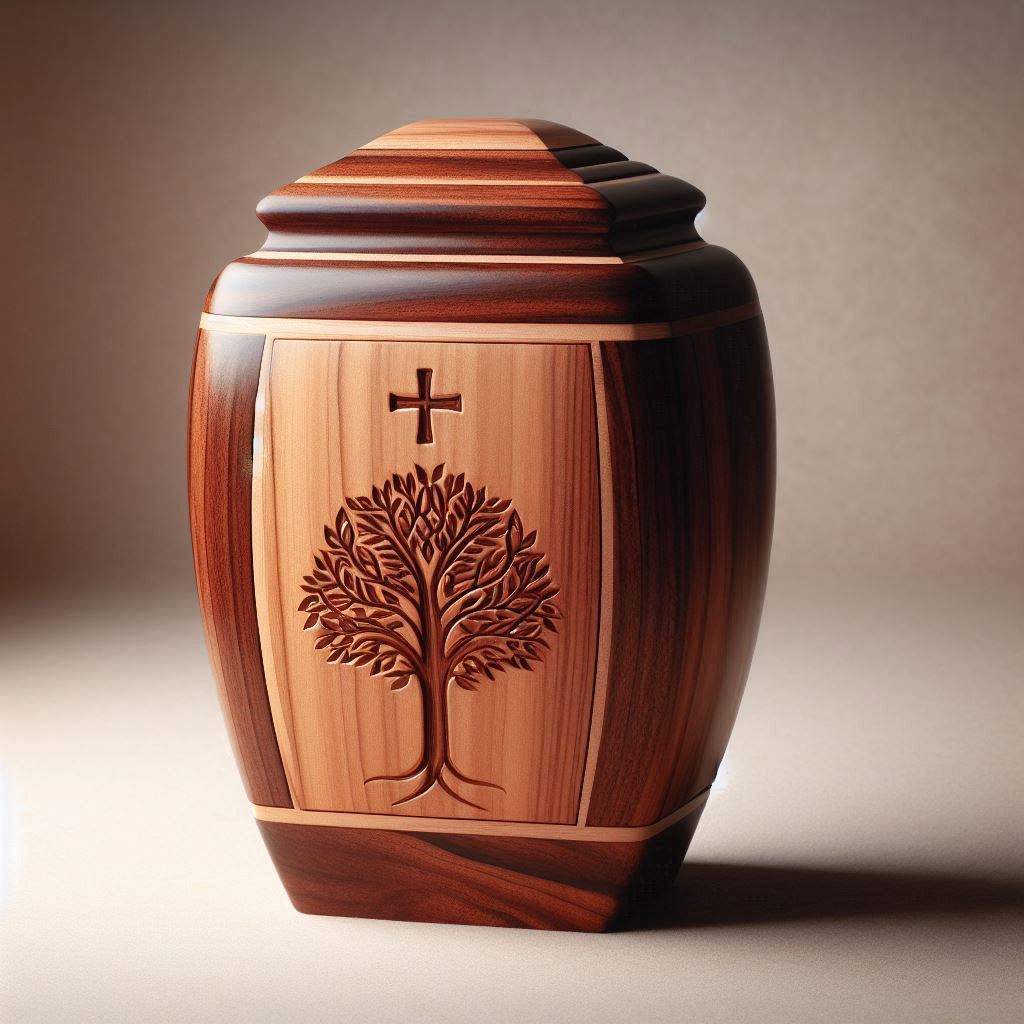
What Happens To Your Pet’s Ashes After Cremation - Pet Cremation Procedure Guide.
Share
Pet Cremation Process Simplified: Everything You Need to Know
Losing a beloved pet is like losing a member of the family. As more families choose cremation for their furry companions, questions naturally arise: How does the pet cremation process work? What happens to the ashes? And how do you choose the right urn to honor your pet?
In this guide, we simplify the pet cremation process and offer suggestions for selecting a wooden pet urn that reflects your pet’s unique spirit. Whether you’re just beginning to make arrangements or want to learn more about options, this post will walk you through each step with compassion and clarity.
(For a deeper look at the human cremation process, visit our related post: [How Does Cremation Work?])
What Is Pet Cremation?
Pet cremation is a process that uses high heat to reduce your pet’s body to bone fragments, which are then processed into fine ashes. It’s a respectful, affordable, and flexible option for saying goodbye.
There are typically three types of pet cremation:
- Private cremation: Your pet is cremated alone. You receive only their ashes.
- Partitioned cremation: Multiple pets are cremated at once but kept separate.
- Communal cremation: Pets are cremated together. Ashes are not returned.
Most pet parents choose private cremation to ensure they receive only their pet’s remains.
Step-by-Step Pet Cremation Process
Understanding the process can provide peace of mind. Here's what typically happens:
- Transportation: Your veterinarian or cremation provider picks up your pet or allows drop-off.
- Documentation: Details and ID tags are recorded to ensure proper handling.
- Cremation: Your pet is placed in a cremation chamber, where intense heat reduces remains to bone.
- Processing: The bone fragments are cooled and processed into ashes.
- Return of Ashes: Ashes are placed in a temporary container or your selected pet urn and returned to you within days.
What Happens After Cremation?
Once the ashes are returned, you can choose how to memorialize your pet:
- Keep the urn at home in a special place
- Create a pet memorial in your garden
- Scatter the ashes in a favorite outdoor spot
- Share ashes with family using keepsake urns
- Bury the urn with a marker or stone
If you're holding a remembrance ceremony, check out our guide on [How to Plan a Memorial Service: A Step-by-Step Guide] for ideas you can adapt for pets.
Choosing the Right Pet Cremation Urn
Selecting a pet urn is a deeply personal decision. The right urn can help celebrate your pet’s personality and your memories together.
Wooden pet urns are especially popular for their warmth, elegance, and natural look. They also offer excellent options for engraving, photos, or themed designs.
Popular Pet Urn Themes:
- Nature-themed urns: Trees, paw prints, birds, or outdoor scenes

Each of these themes is available in our collection of handcrafted wooden pet urns, allowing you to choose one that feels just right.
Simple Ideas to Honor Your Pet’s Memory
Your journey doesn’t end with receiving the ashes. Here are a few meaningful ways to honor your pet:
- Set up a memory shelf with their urn, leash, photo, and favorite toy
- Plant a tree or flowers next to the urn or ashes
- Create a scrapbook with photos and stories
- Hold a small gathering with loved ones who knew your pet
- Add a custom engraving to the urn with their name and dates
Whether it’s a quiet tribute or a joyful celebration of life, these small gestures can bring great comfort.
How Long Do Pet Urns Last?
Durability depends on the material. Wooden urns—especially those made from hardwoods like walnut, cherry, and oak—are ideal for indoor use and will last for generations if properly cared for.
We recommend keeping your pet’s urn in a cool, dry place away from direct sunlight. Wood can be sealed and even passed down as a family keepsake.
Is it good to keep your pet's ashes?
There's no proven bad omen that comes from keeping ashes at home. However, it would be unhealthy to keep the ashes around if they would only radiate stagnant energy, preventing you from moving on.
Why are urns so expensive?
Size Does matter, specially in cremation urns
The size of the urn is another factor that can affect its cost. Larger urns require more material and more labor to produce, and therefore, tend to cost more. Smaller keepsake or token urns, which hold only a small portion of ashes, can be less expensive.
What are pet ashes called?
When you receive your pet's “ashes”, you may be surprised by the appearance. Cremains (CREmated reMAINS) is a better word to use than “ashes”. The word ashes may be misleading due to the fact that the cremains are not factually only a fine grey powder.
Is it bad feng shui to keep pet ashes in the house?
The ashes will take the Yang Chi from our indoor environment. This is not good for us, who are still living. Nearly everything we do in Feng Shui for the inside of the home is about cultivating and increasing Yang Chi.
Can you personalize an urn?
Customized Engraved Urns for Human Ashes Adult: Personalize each urn with your loved one's name and a heartfelt message, creating a lasting tribute that beautifully honors their memory and reflects a life well-lived.
Final Thoughts: A Loving Goodbye
Saying goodbye to a pet is one of the hardest things we do. Understanding the pet cremation process and choosing a thoughtful memorial can help bring closure while keeping their memory alive. A handcrafted wooden pet urn not only protects your pet’s ashes but honors their place in your heart and home.
If you’d like more help with memorial planning or understanding cremation, check out our other guides:
